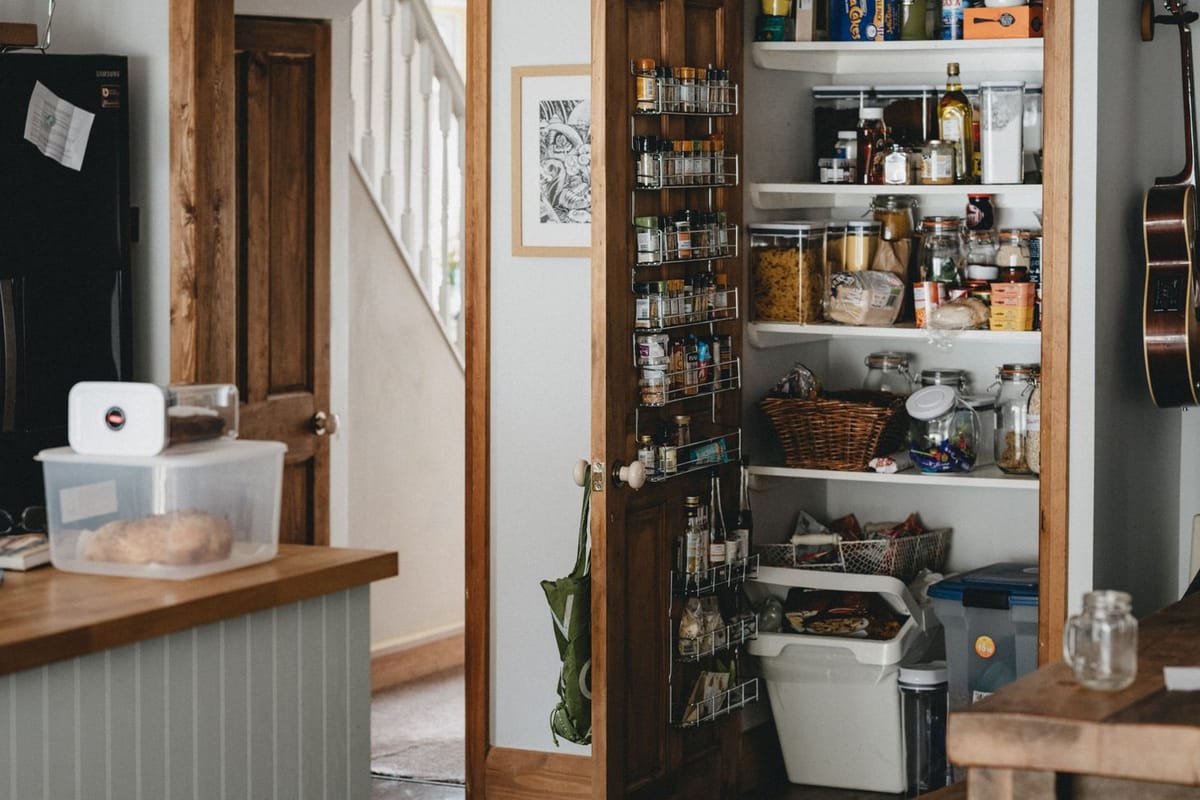This post is a guide on how to stock your pantry, but not necessarily a definitive one. A pantry is a very personal thing— it reflects your own preferences, tastes, and the flavors you like to cook with the most. The spices, vinegars, sauces, and condiments you use may vary substantially depending on what you like to cook.
This guide serves as a useful starting point that covers the major categories of pantry items, along with some specific brand recommendations for each.
When stocking a pantry, I like to think about covering major flavor profiles— salt, acid, fat, umami, and spice. Having items from each of these categories will allow you to easily add flavor and balance to whatever you’re cooking.
I’ve broken it down into major sections:
- Salt
- Oils and Fats
- Vinegars and Acids
- Spices
- Sauces + Condiments
- Miscellaneous
SALT
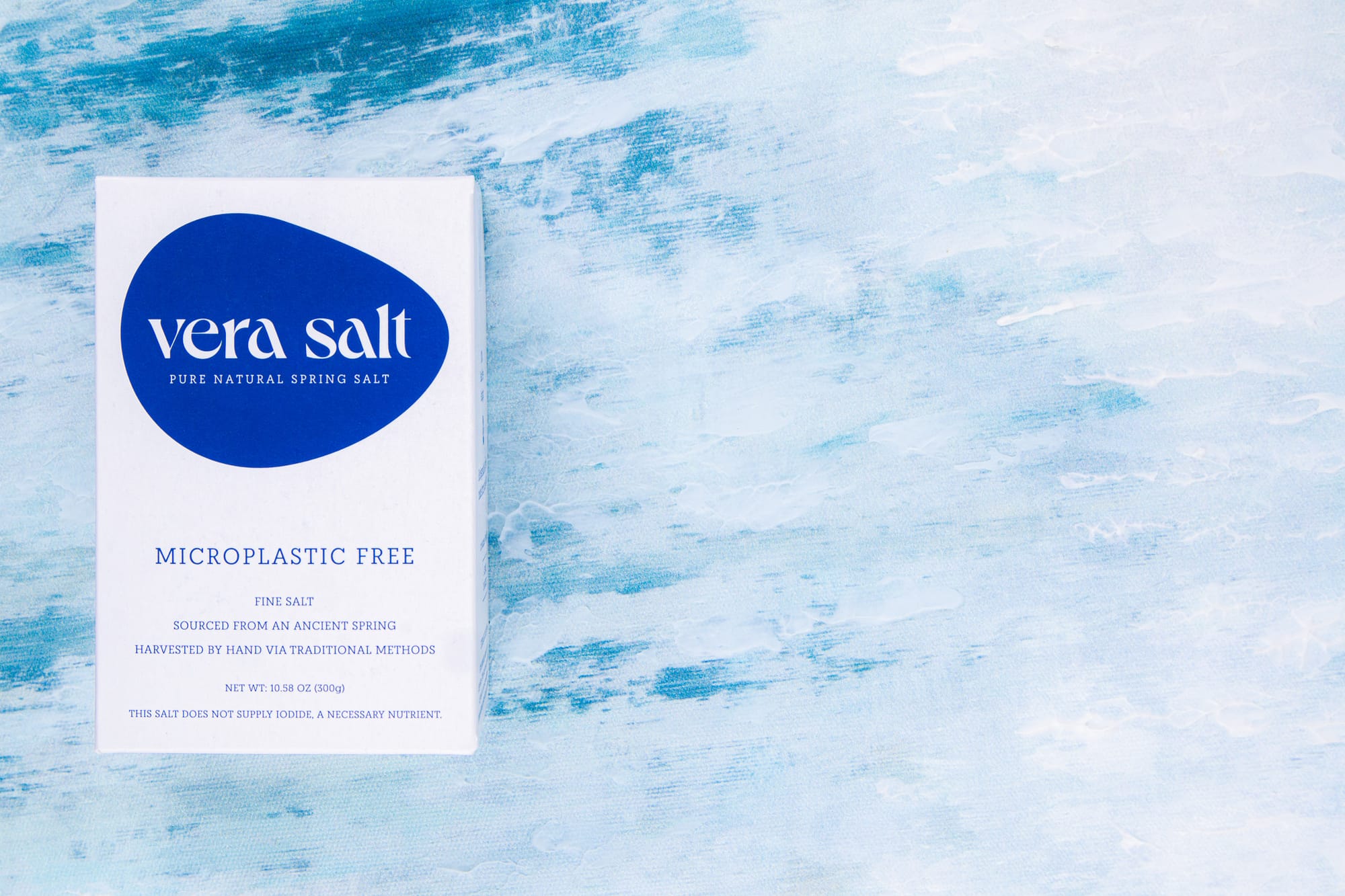
Salt is the single most important ingredient in all of cooking, and it's the one thing that will touch everything you cook. That's why I think it's worth seeking out the best option you can find.
Every home cook should have two different types of salt in their kitchen— a salt with a medium-fine grind to use for everyday cooking and a flaky salt to use for finishing.
I’m something of a salt nerd, and I’ve spent a lot of time obsessing over different salts and comparing their properties. All salt comes from the ocean, but not necessarily from modern oceans. There are salt mines in places like Spain, Peru, and Appalachia that contain salt from ancient oceans. These salts are far more pure than sea salts from modern oceans and contain fewer contaminants (like microplastics).
There are a few different brands of salt that specifically source from these ancient salt deposits, but they’re not all the same in terms of performance, grind size, ease of use, and taste. Vera Salt is by far my personal favorite for everyday cooking— it has a great texture, a clean taste, performs well, doesn’t have any grittiness, and is third-party tested for microplastics, heavy metals, and mineral content.
My Recs:
OILS AND FATS
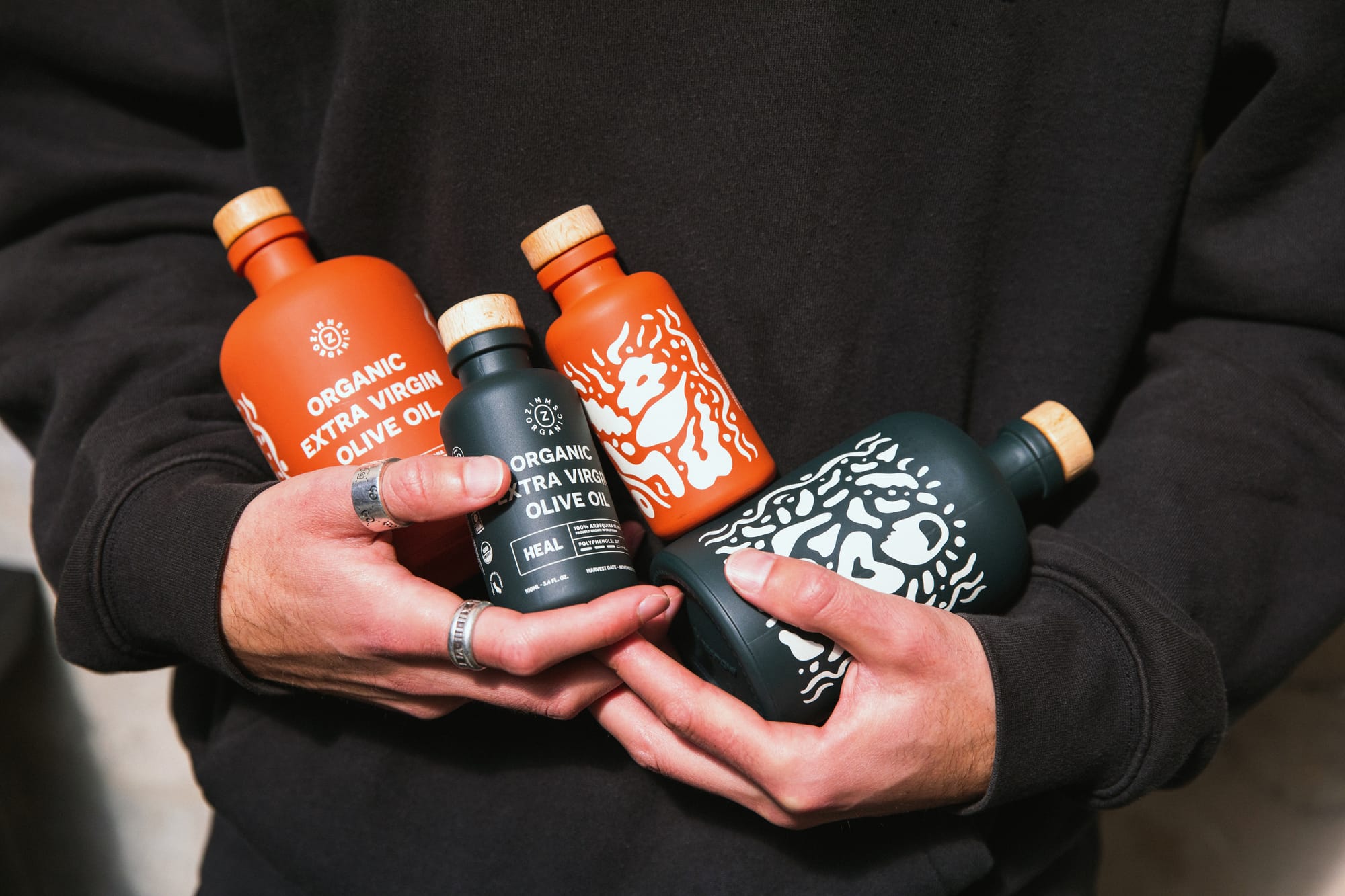
After salt, fat is the second most important pantry ingredient as it will touch nearly everything you cook.
I always have three types of oil in my kitchen: olive oil, beef tallow (or ghee), and butter.
Olive Oil
Olive oil is by far the most-used oil in my kitchen. When shopping for olive oil, it's important to buy extra-virgin oil with a harvest date (and bottling date) listed. I also prefer to buy organic olive oil, as the pesticides sprayed on non-organic olive trees can make their way into the oil. There is unfortunately a lot of fraud in the olive oil industry, so it's worth seeking out high-quality, reputable producers.
I like to keep two types of olive oil on deck— one for cooking, and then another high-quality one that I use for finishing/drizzling.
My Recs:
Beef Tallow
I use beef tallow any time I'm doing something with really high heat– it's my preferred fat for searing meats, deep frying, and high-heat roasting. It also has a beautiful flavor that makes it great with vegetables, especially roasted potatoes.
My Recs:
- Epic Provisions or Fatworks (or try to find a source locally)
Ghee
Ghee– made from butter that's had the milk solids filtered out– is another high-heat oil that has a delicious flavor that isn't overwhelming. It's a great vegetarian alternative to tallow. I tend to keep both on deck and use ghee any time I want that slightly buttery flavor.
My Recs:
Butter
Butter is more than just a fat for cooking. It's a flavor booster, sauce thickener, soup enhancer, and so much more. My rule for butter is simple– seek out the highest-quality source you can afford. Ideally from 100% grass-fed, grass-finished cattle.
Other Oils
Occasionally I'll use coconut oil, avocado oil, and other animal fats.
Coconut oil tends to have a strong coconut flavor, so I only use it in dishes where that's appropriate.
Avocado oil is great as a neutral oil that's also liquid at room temp. It's good for mayonnaise and high-heat cooking, though I'd generally use tallow for anything that's not strictly vegetarian.
Finally, I occasionally use lard (pork fat), duck fat, and even chicken schmaltz.
My Recs:
- Coconut Oil: Dr. Bronner’s
- Avocado Oil: Chosen Foods
- Other Animal Fats: Epic Provisions or Fatworks
VINEGARS AND ACIDS
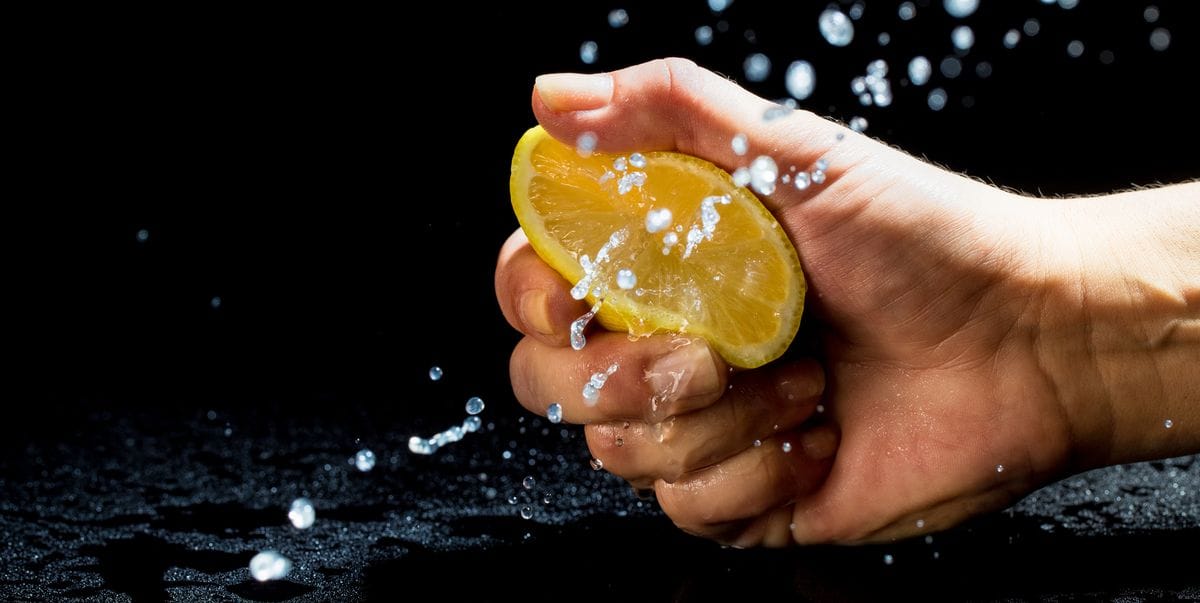
Acidity is another important component of seasoning, and it’s one we’ll discuss at length in this course. There are two primary forms of acidity that I use in my cooking— citrus (like lemons and limes) and vinegar.
My love for vinegar runs deep. It's such an amazing ingredient that brings far more than just acidity– it brings depth from the fermentation, additional flavor from the base used, occasional sweetness, and so much more. I love exploring different vinegars, and I’ve tried quite a few different brands.
If I had to just keep a few on deck, I'd have balsamic vinegar, rice vinegar, and one interesting flavored vinegar (Acid League's Meyer Lemon Honey and Lindera Farms Ramp Vinegar are two favorites).
My Recs:
- Katz, American Vinegar Works, and O-Med for wine and fruit vinegars.
- The Japanese Pantry (and specifically the Iio Jozo brand) and Sennari for rice vinegar.
- Lindera Farms, Tart, Acid League, and Keepwell for exceptional high-quality flavored vinegars.
- Villa Manodori for Balsamic vinegar.
SPICES
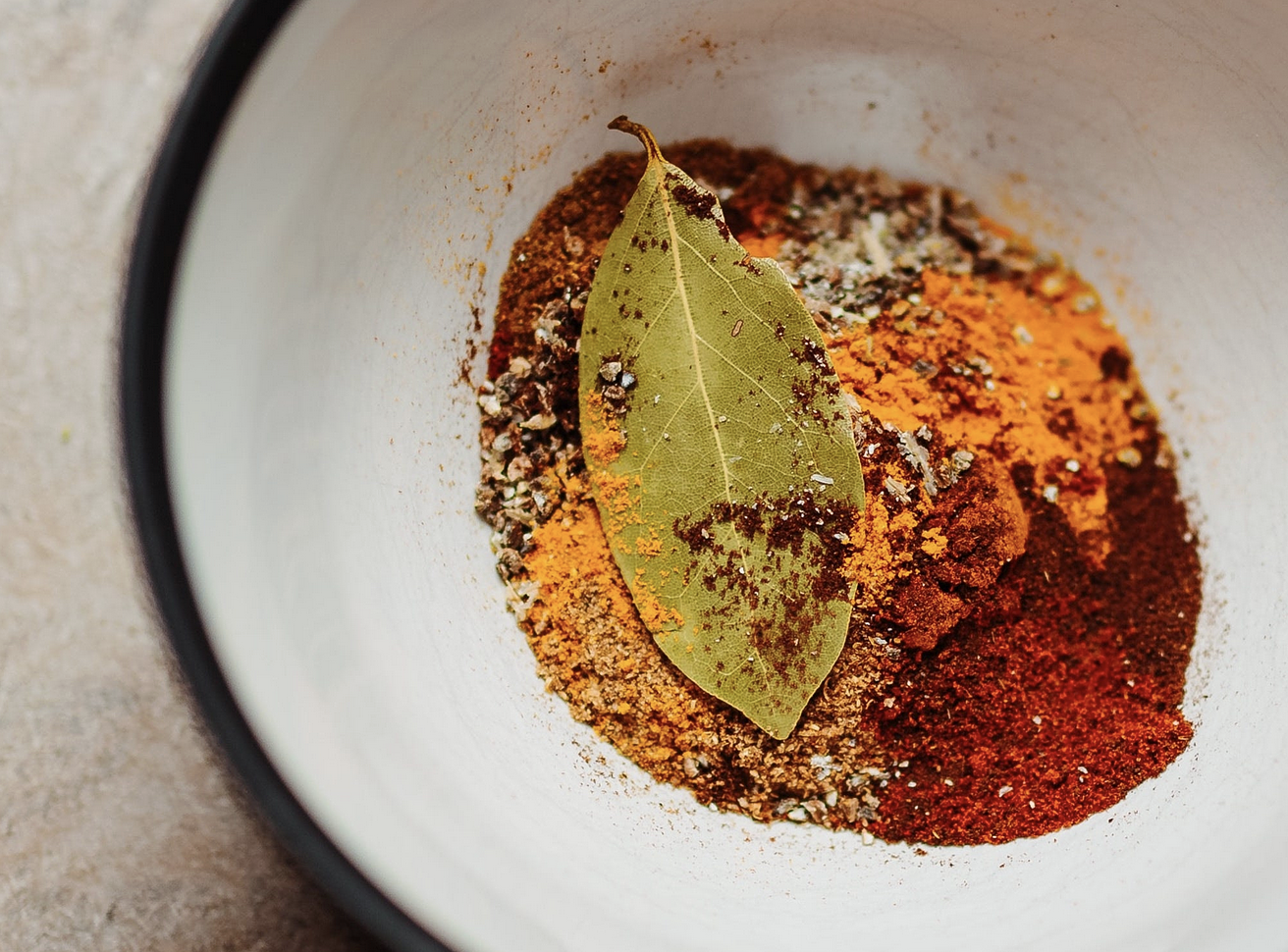
Spices are an essential part of any pantry, but they'll vary widely depending on the flavor profiles you gravitate towards.
Quality and freshness are two huge factors when it comes to spices. Spices degrade over time, so you want to buy from good producers who source them fresh. Instead of providing a list of specific spices to buy (since that varies a lot depending on what you cook, I've provided a list of my favorite reputable producers).
Also– I'm a huge fan of spice blends as an easy kitchen hack. You can easily add big flavor to a bunch of different dishes and explore various flavor profiles with almost no added effort. Most of these producers offer both individual spices and blends.
My Recs:
- Burlap & Barrel, La Boite, Smith & Truslow, Spicewalla, and Diaspora Co.
- For chile powders, Boonville Barn is my absolute favorite.
SAUCES + CONDIMENTS
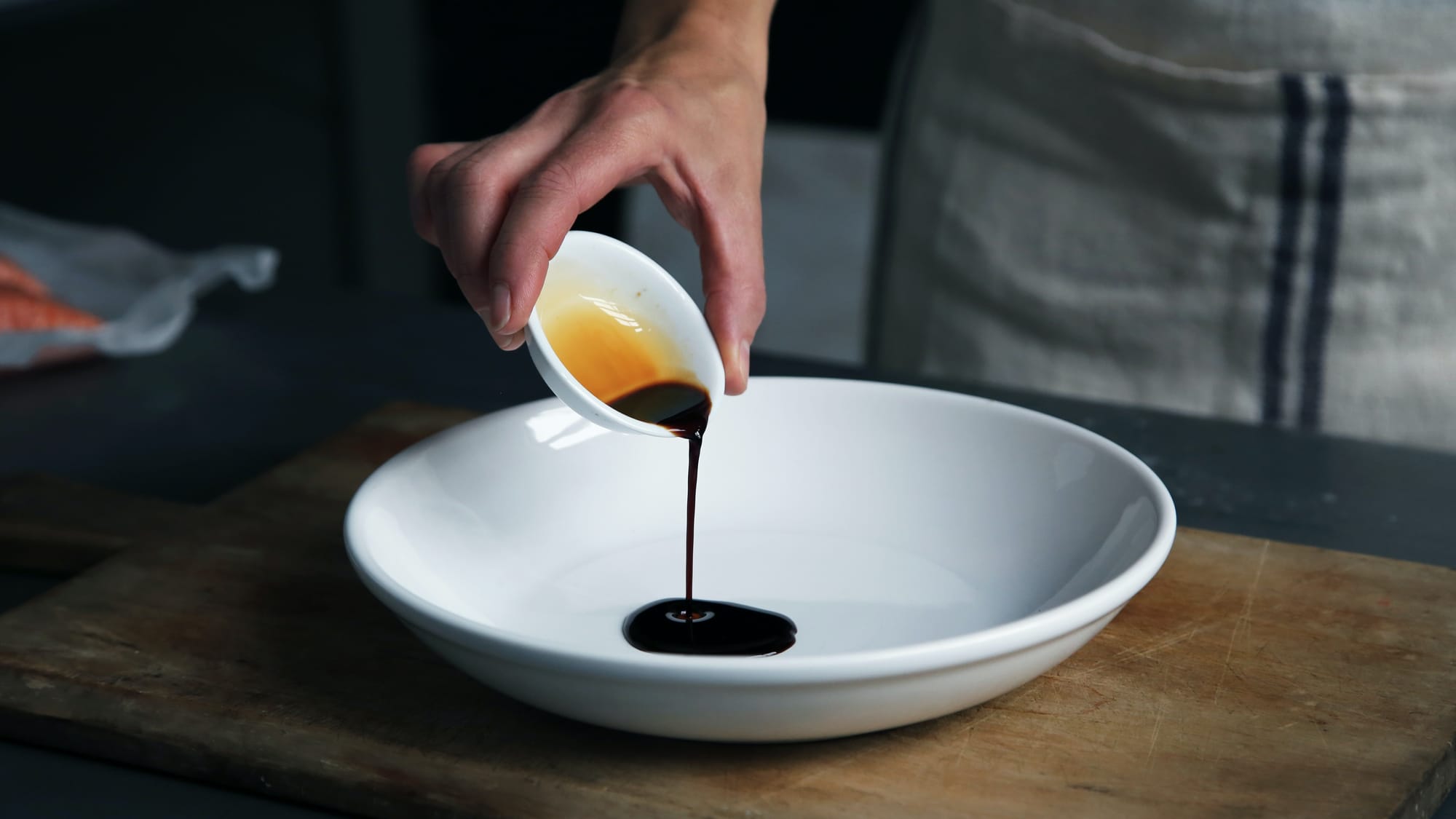
Soy Sauce
Soy sauce is more than just a condiment for sushi– it's an umami booster that can make its way into a variety of different dishes.
- My rec: anything from The Japanese Pantry
Fish Sauce
Fish sauce is a staple in my kitchen. On its own, it has an intense flavor and aroma that can feel overpowering. But a dash of it blends seamlessly into the background of sauces, dressings, soups, and stews while adding an incredible boost of umami (like in this soup recipe).
Hot Sauces
My love affair with hot sauces runs as deep as my love affair with vinegar. I'm constantly trying new brands and small producers. In all likelihood, there's a small hot sauce producer in your area doing cool things– find them!
- My recs: Lindera Farms (my favorite hot sauce I've tried in years), Rancho Gordo, Hoff Sauce
Mayo
A staple for making sauces and dressings– there's always a jar in my fridge. I highly recommend making your own as it’s quite easy and tastes better than anything you can buy at the store.
- My rec: Primal Kitchen, Chosen Foods
Chile Paste
I always keep chile pastes on deck. Depending on your flavor preferences, this could be anything from Mexican-style adobo to gochujang, harissa, sambal oelek, and more. These add a nice pop of flavor to marinades, dressings, sauces, soups, braises, and so much more.
Miso
- My rec: Miso Master, anything from Japanese Pantry
MISCELLANEOUS
Bone Broth
- My rec: Kettle & Fire, Brodo (even better if you can make it yourself or buy from a local butcher)
Canned Tomatoes and Tomato Paste
- My rec: Bianco DiNapoli
Raw Honey
- My rec: Find it locally!
Dried Chiles
- My rec: Boonville Barn
Masa Harina
- My rec: Masienda
Flours and Dried Grains
- My recs: Anson Mills, Barton Springs Mill, Marsh Hen Mill
Beans
- My rec: Rancho Gordo
Dried Pasta
- My rec: Seggiano

